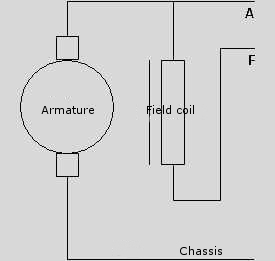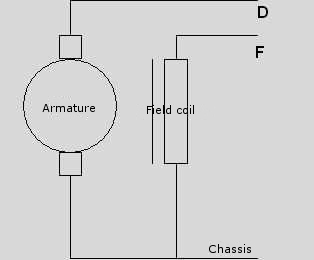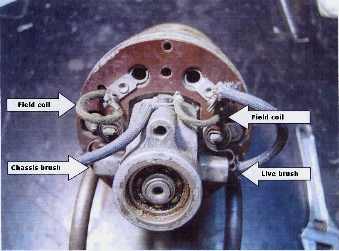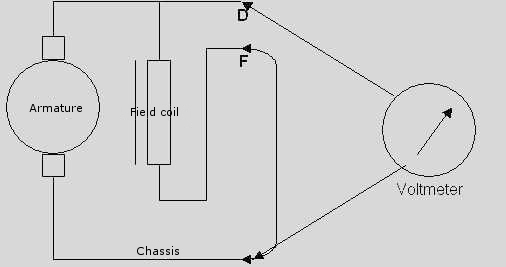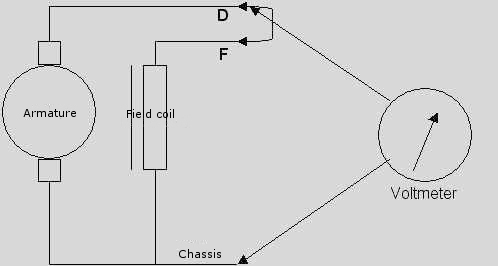Type of dynamo
Dynamos generally fall into two types, which has something to do with the way the field coil is coupled.
|
|
|
|
|
Type A, field coil has one end connected to the live brush, regulation is done between the other end and chassis |
|
B type: One end of field coil connected to chassis, regulation is done between other end and the live brush. Polarity is a matter of magnetizing correct.
|
|
|
|
|
|
Which
type?
Disconnect the wires from the dynamo Voltmeter range: 20 Volt dc
Connect one lead to chassis, the other to D on the dynamo
|
|
|
|
|
|
Start the engine, but do not exceed fast idle.
With the piece of wire, connect F to chassis.
If you measure 6 volt or more, you have a type A dynamo
If you measure 0 volt, connect F to D
|
|
|
If you still measure 0 (or 1 - 2 volt) you probably have a defective dynamo. Field coil interrupted.
Remember to check that you have the correct polarity
The voltmeter can be replaced by a bulb with two wires, but it is first to be connected when the field coil is connected, as the bulb will "eat" the small amount of electricity that should get the dynamo started
|
|
Very generally
Most British bike from 50 60s are type B with chassis plus. Early Brits can be chassis minus. Germans and Russians, Puch and Nimbus are type A, except DKW and MZ, and some Jawas which are type B, all with negative chassis, although some old Russians have been seen with positive chassis. Harley Davidson from '32 onwards use type B, negative chassis, while Americans fro the 20s use type A, when converted fro three to two brush system. Always remember the human factor, some clever guy may have decided to couple the dynamo to suit him.
|
|
